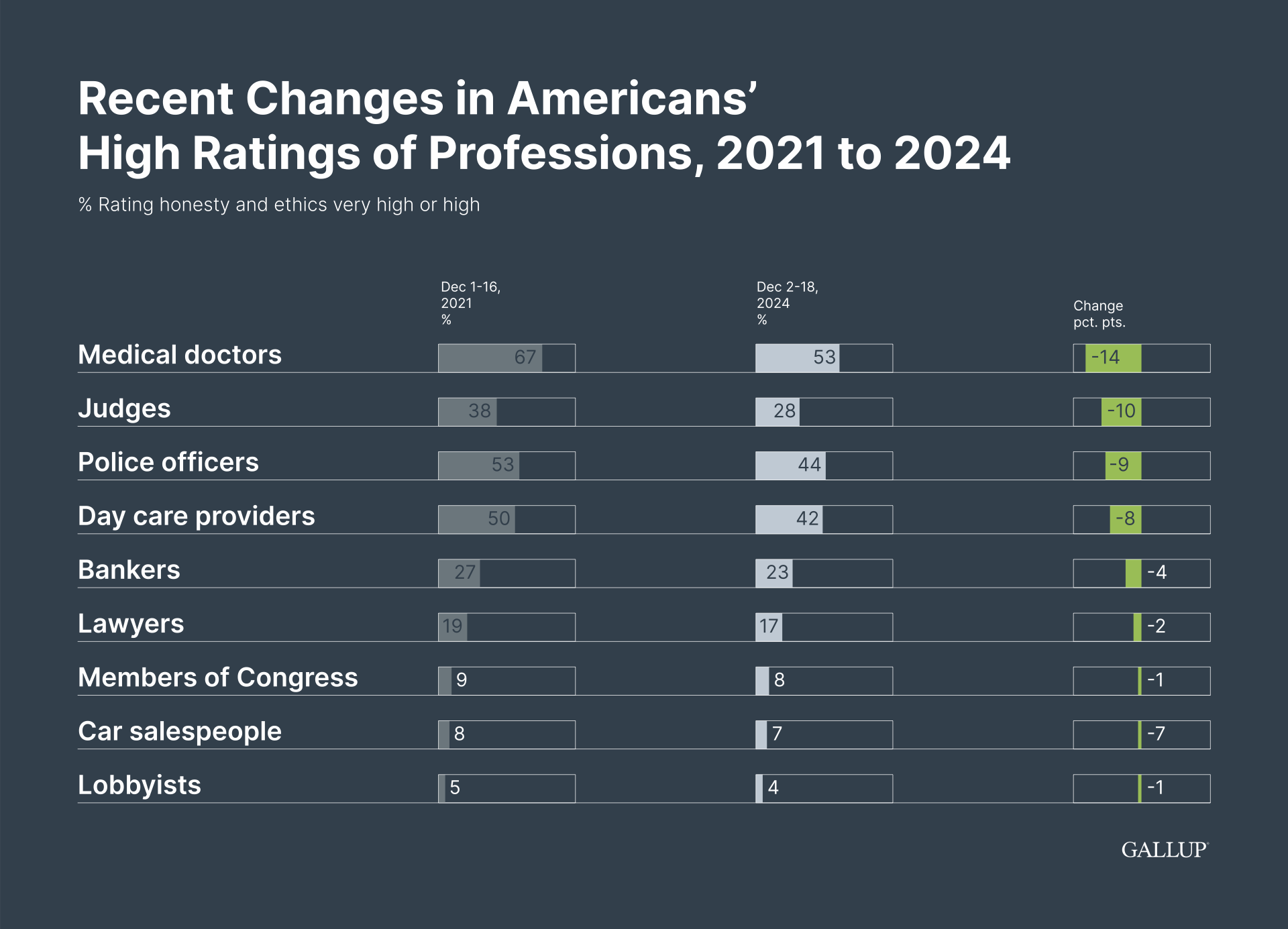Can healthcare-focused, conversational AI bridge the trust gap between patients and providers?

Over 2,000 years ago, a Roman poet named Virgil wrote, “The greatest wealth is health”. Today, in this regard, millions of Americans are feeling poorer than ever. And, the gap with those we trust to keep us healthy is growing.
In Gallup’s 2024 survey on professional ratings, the percentage of Americans rating doctors as “high” or “very high” in honesty and ethics plunged from 67% to 53% since 2021 – the steepest decline across 23 professions.

A recent Wall Street Journal piece, “Why We Don’t Trust Doctors Like We Used To,” framed up the issue vividly: older adults, juggling chronic conditions, now see five or more physicians a year. Each visit might be a change to a prescription, new advice, or any number of confusing moments in their uniquely complex journeys.
Care feels disjointed.
Patients, overwhelmed by fragmented communication and rushed appointments, have started turning to online forums or third-party advocates to make sense of it all.
The health system is not just strained, it is alienating the very people it has a mission to serve. If this erosion of trust continues, the costs – both economic and human – could be staggering.
But, there is a better way.
Healthcare organizations have a chance to reconnect with patients: by being present, proactive, and personal at multiple stages in their journey.
Done right, technology like conversational AI can help close the trust gap, by being there for patients whenever and wherever they need guidance. To truly connect, it must first be built with insight, credibility, and empathy.
Achieving insight goes beyond data. In this case, it’s a fresh, intimate understanding of patients’ needs, concerns, and decision-making processes.
At Brado, I was excited to join a team that goes far beyond collecting data and achieving insight for clients. We seek real understanding. For decades, this team of brilliant creative problem solvers has mapped the healthcare journey from the inside out, working hand-in-hand with patients, specialists, physicians, and multiple other stakeholders.
Achieving this level of insight means knowing not just what patients are asking, but why they are asking it. Then, being able to anticipate what a patient needs to move forward with confidence (i.e., addressing tensions that have kept them pushing through the pain instead of trying to get a diagnosis).
This deep understanding of moments and tensions in a patient journey made it possible for Brado to build something different:
A Conversational Engagement Platform (CEP) rooted in empathy and credibility. This CEP, in this case, creates value for patients and healthcare organizations in a few ways:
1. Simplify the Complex: Providing instant, personalized guidance to cut through the noise and set clear expectations early, helping consumers navigate complex information early and throughout care.
This helps patients feel more confident and in control, while reducing the burden on providers.
2. Guide with Precision: Using insight-driven conversation and questions to steer patients to the right resources and guidance, for their personal care needs.
This allows for a seamless way connect them to the right access points (e.g., education about the condition, learning about procedures and surgeons, and connecting them to appointments).
3. Build Trust Through Connection: Showcasing clear, credible information about specialized service lines, introducing trusted providers, and incorporating video and visual elements reinforces your expertise and quality of care.
This builds and reinforces reputation which helps drive patient loyalty and increased service utilization with providers.
Brand and experience can’t be separated anymore.
Organizations that show up early, often, and authentically, will be the ones patients trust the most.
It is not just the patients who benefit.
When healthcare systems lift some of the strain off physicians, and patients are showing up informed and engaged before their first appointment, they empower doctors to do what they do best: deliver great care.
This is a defining moment. Healthcare systems can either double down on their current course and watch trust erode further, or rethink how they show up for patients from the first touchpoint to follow-ups.
We cannot fix everything overnight. But, matching true insight and the technology we build upon today, we can help rebuild the trust patients deserve, and that healthcare providers need.
I’m just proud to be a part of it.
